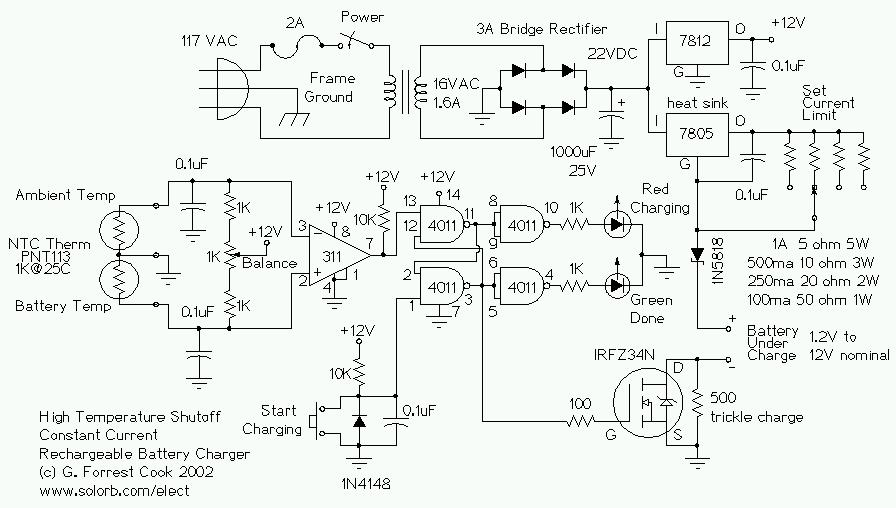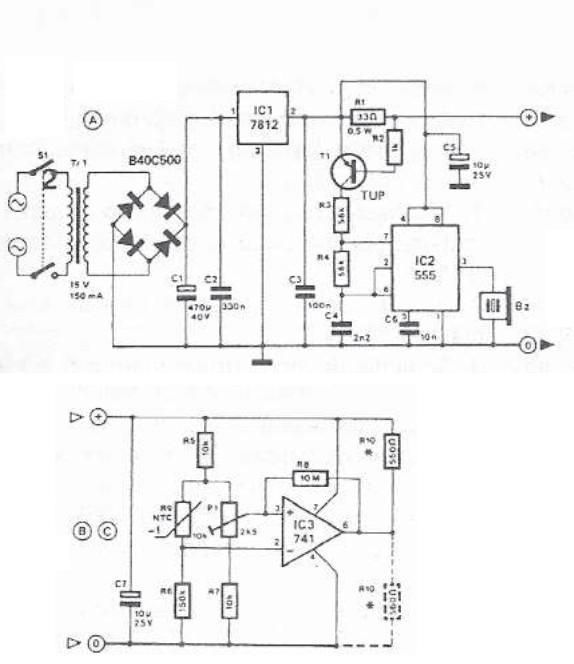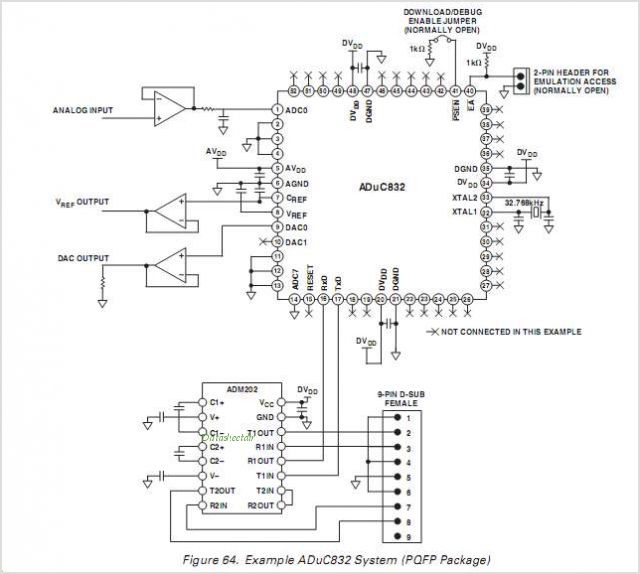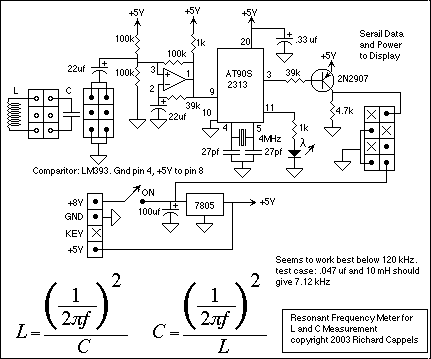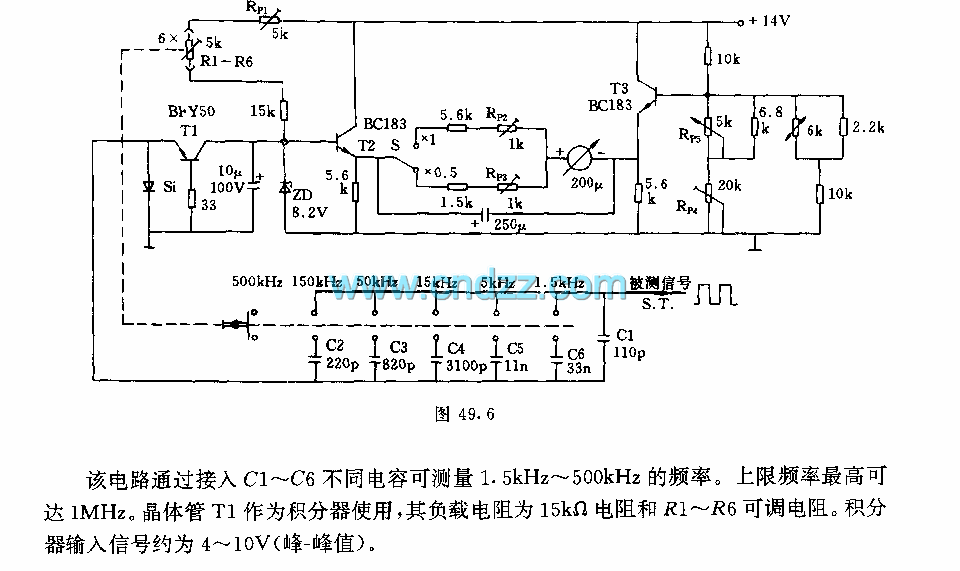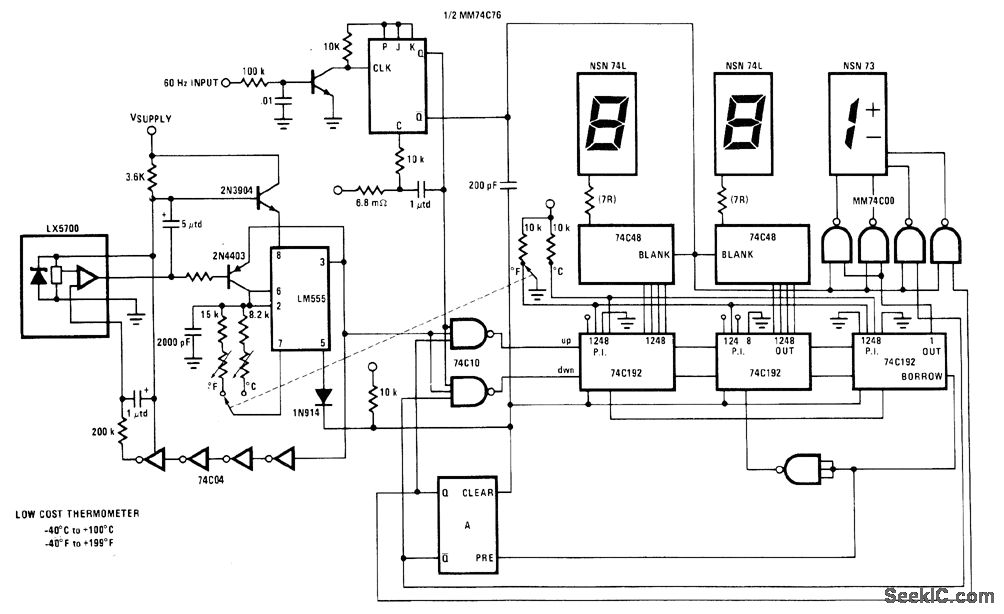
PIC Dual Temperature Meter by PIC16F628
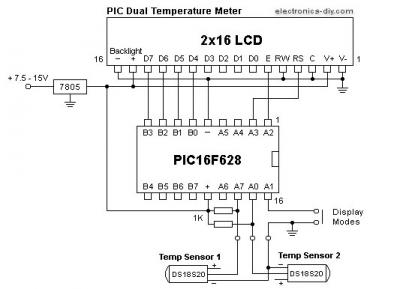
This is a simple-to-build PIC temperature meter that allows for simultaneous temperature measurement in two different locations. Such a useful and powerful circuit can be constructed with minimal components while offering extensive possibilities. This is made feasible by utilizing the PIC16F628 microcontroller and a 2G-16 character LCD display, which functions like a small computer and is customizable through upgradeable hex firmware. The presented PIC temperature meter employs two DS18S20 digital temperature sensors, housed in a convenient TO-92 package. Unlike traditional sensors that provide temperature readings as varying voltage levels, the DS18S20 transmits temperature data in a digital format. This feature introduces numerous new opportunities, enabling temperature information to be transmitted over longer distances using only a two-wire cable. Consequently, temperature can be measured in various locations simultaneously and away from the main circuit board. In contrast, conventional sensors that depend on varying voltage require shorter cables, as longer wires introduce stray resistance, leading to unreliable readings.
The PIC temperature meter circuit utilizes the PIC16F628 microcontroller, which serves as the central processing unit for data collection and display management. The microcontroller is programmed to interface with two DS18S20 digital temperature sensors, which communicate with it via a single data line using the 1-Wire protocol. This protocol allows for the connection of multiple sensors on the same data line, facilitating the simultaneous measurement of temperatures from different locations.
The DS18S20 sensors convert the ambient temperature into a digital signal, which is then sent to the microcontroller for processing. The microcontroller interprets this data and sends it to the 2G-16 character LCD display, where it is presented in a user-friendly format. The LCD is capable of displaying temperature readings in degrees Celsius or Fahrenheit, depending on the firmware configuration.
Power supply considerations for this circuit are essential, as the PIC16F628 microcontroller and the DS18S20 sensors require a stable voltage for accurate operation. A regulated power supply circuit can be included to ensure that the system operates reliably under varying input conditions.
The design of the circuit allows for flexible placement of the temperature sensors, as they can be located at significant distances from the main circuit board without compromising the integrity of the data transmission. This capability is particularly advantageous in applications where temperature monitoring is required in multiple environments, such as in HVAC systems, laboratories, or outdoor settings.
Overall, the PIC temperature meter is an innovative solution that combines simplicity, efficiency, and versatility, making it an excellent choice for temperature measurement applications. The use of digital sensors and a customizable microcontroller enhances its functionality and adaptability to various user needs.This is extremely simple to build PIC Temperature meter that allows to measure temperature in two different locations at the same time. Never before such a useful and powerful circuit could be built with so little components and yet provide endless possibilities.
This is all possible thanks to the use of PIC16F628 microcontroller and 2G—16 charact er LCD display that act like a small computer which can be customizable thanks to upgradeable hex firmware. Presented PIC temperature meter uses two very exciting DS18S20 digital temperature sensors that come in convenient TO92 package.
Unlike regular sensors where temperature readings are passed as varying voltage, DS18S20 passes temperature information in a digital format as data. This brings many new possibilities and enables to pass temperature information over much longer distances just over a two wire cable.
With this temperature can be measured in different locations at the same time and away from the main circuit board. With regular sensors which rely on the varying voltage cables must be as short as possible because longer wires introduce stray resistance that bring unreliable readings.
🔗 External reference
The PIC temperature meter circuit utilizes the PIC16F628 microcontroller, which serves as the central processing unit for data collection and display management. The microcontroller is programmed to interface with two DS18S20 digital temperature sensors, which communicate with it via a single data line using the 1-Wire protocol. This protocol allows for the connection of multiple sensors on the same data line, facilitating the simultaneous measurement of temperatures from different locations.
The DS18S20 sensors convert the ambient temperature into a digital signal, which is then sent to the microcontroller for processing. The microcontroller interprets this data and sends it to the 2G-16 character LCD display, where it is presented in a user-friendly format. The LCD is capable of displaying temperature readings in degrees Celsius or Fahrenheit, depending on the firmware configuration.
Power supply considerations for this circuit are essential, as the PIC16F628 microcontroller and the DS18S20 sensors require a stable voltage for accurate operation. A regulated power supply circuit can be included to ensure that the system operates reliably under varying input conditions.
The design of the circuit allows for flexible placement of the temperature sensors, as they can be located at significant distances from the main circuit board without compromising the integrity of the data transmission. This capability is particularly advantageous in applications where temperature monitoring is required in multiple environments, such as in HVAC systems, laboratories, or outdoor settings.
Overall, the PIC temperature meter is an innovative solution that combines simplicity, efficiency, and versatility, making it an excellent choice for temperature measurement applications. The use of digital sensors and a customizable microcontroller enhances its functionality and adaptability to various user needs.This is extremely simple to build PIC Temperature meter that allows to measure temperature in two different locations at the same time. Never before such a useful and powerful circuit could be built with so little components and yet provide endless possibilities.
This is all possible thanks to the use of PIC16F628 microcontroller and 2G—16 charact er LCD display that act like a small computer which can be customizable thanks to upgradeable hex firmware. Presented PIC temperature meter uses two very exciting DS18S20 digital temperature sensors that come in convenient TO92 package.
Unlike regular sensors where temperature readings are passed as varying voltage, DS18S20 passes temperature information in a digital format as data. This brings many new possibilities and enables to pass temperature information over much longer distances just over a two wire cable.
With this temperature can be measured in different locations at the same time and away from the main circuit board. With regular sensors which rely on the varying voltage cables must be as short as possible because longer wires introduce stray resistance that bring unreliable readings.
🔗 External reference
